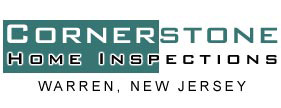NJ Landlords
NJ’s lead-based paint law is now in effect as of July 2022. The law states that the landlord MUST hire a Lead Inspector/Risk assessor to perform an inspection of certain single-family, two-family, and multiple rental dwellings for lead-based paint hazards every three years or upon tenant turnover after 2 years This law is directed at pre-1978 rental properties requiring periodic inspections. These properties must be inspected by July 22, 2024 OR upon tenant turnover/rental, whichever happens first. To obtain a New Jersey Lead Safe Certification, a visual inspection or a dust wipe inspection is needed for rental properties every 2 years it there has been a tenant turnover. A 1-year extension is available if the same renter occupies the home the entire time.
Click here to find the type of inspection you need to get your Lead Safe Certificate.
*Some dwellings are exempt from this law. These are: Lead Free Certified Dwellings, ………………..
*ALL evaluations, testing, and certificates for lead-based paint hazards MUST be conducted by a certified Lead Inspector / Risk Assessor trained as per N.J.A.C 8:62 and employed by a Lead Evaluation Contractor. If your certificate is issued by someone other than this, fines may occur, and certificates rendered invalid!
Cornerstone offers the following services that satisfies the requirements For NJ Landlords.
- Visual Lead Evaluation: The certified Lead Inspector/Risk Assessor will conduct a visual inspection of the interior and exterior of the home and look for chipping, peeling, and flaking paint. If the paint in the home is acceptable, the owner will be issued a Lead Safe Certificate. This certificate is valid for two years.
- Dust Wipe Testing: The certified Lead Inspector/Risk Assessor will conduct a visual inspection and take dust wipe samples in the home and send to a certified lab for analysis. Sampling is recommended for windowsills, window wells and floors in children’s; bedrooms, play areas, kitchen, and any other child inhabiting area. All samples will be collected as per HUD guidelines and by a certified Lead Inspector and analyzed by an accredited lab. If the lab results come back satisfactory, the owner will be issued a Lead Safe Certificate. This certificate is valid for two years.
Click here to find out the type of inspection you need to get your Lead Safe Certificate.
Lead-Based Paint Information
Lead-based paint (LBP) is defined as paint or other surface coatings that contain lead equal to or exceeding 1.0 milligram per square centimeter. This includes paints, stains, and polyurethane coatings. These surface coatings have been federally banned for residential use only since 1978 (not banned commercial). It is estimated that over 75% of pre-1978 dwellings contain lead-based paint in some fashion. Even though Lead was known as a hazard since the 1960’s, Lead-Based Paint was once considered the “good paint” and often used over other alternatives. Even though LBP has been banned since 1978, roughly 3% of dwellings built after 1978 contain Lead-Based Paint! Ingesting and/or inhaling Lead dust is the #1 cause of Elevated Blood Levels (EBL) in children! You will then receive your report including the lab analysis and lead levels present at the time of collection.
Lead-Safe Vs Lead-Free:
Lead-Safe is a practical determination of the potential hazard from lead in LBP. This is used to detect exposure to lead-contaminated from deteriorated surfaces that could result in adverse health effects.
Lead-free is NO lead-based coatings on any surfaces tested. This is a surface by surface analysis of lead content typically done with an XRF machine. Only the surfaces that are tested would be labeled lead-free.
Is the home currently a hazard?
Ingestion and/or inhalation of Lead dust is the #1 cause of Elevated Blood Levels (EBL) in children! Children are not only poisoned by eating paint chips, but dusting, chalking, and aging of painted surfaces poses a large risk since hand to mouth contact is inevitable. A Risk Assessment is used to look for current hazards in the home with potential surface coatings. This represents the condition of the home on the day of the assessment. If dust samples are taken, lab results of all of the sampling will follow with a report recommending actions.
Do I have lead and where is it?
A lead inspection is a surface-by-surface investigation (typically with an XRF gun) of many surfaces to determine the presence and levels of lead-based paint/coatings including a report. Lead-based coatings are any surface coating equal to or greater than 1.0 milligrams per centimeter or in excess of 0.5% by weight. This inspection does NOT tell you which coat of paint contains lead or if it is presently a hazard. It does tell you the location and the concentration levels.
There are no “safe” levels for lead, especially children. Children under 6 years of age should test below 5 micrograms per deciliter (NJ standard) or 3.5 (EPA standard). A child with Elevated Blood Level (EBL) of 20 micro/dl or repeatedly at 15 micro/dl or above should have an EBL Investigation performed or authorized by the Department of Health and medical intervention ASAP.
- CERTIFIED LEAD INSPECTOR / Risk ASSESSOR
Permit ID# 038876 - CERTIFIED LEAD EVALUATION CONTRACTOR
